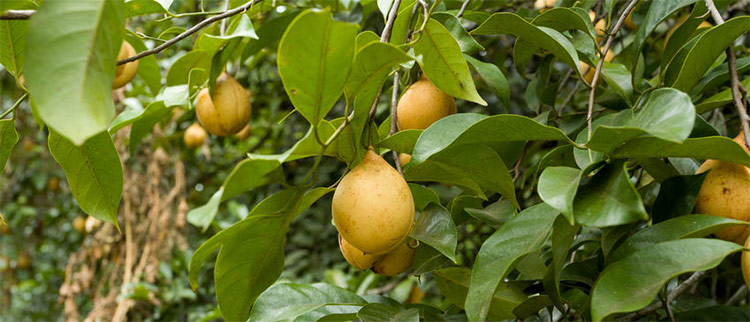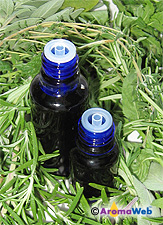CO2 Extracts (Also Known as CO2 Supercritical Extracts)

What are CO2 Extracts?
CO2 Extracts are also referred to as CO2 Supercritical Extracts and sometimes simply as CO2s.
CO2 Extracts are produced by using a method known as supercritical carbon dioxide extraction.
In its normal state, carbon dioxide is a gas that we breathe continually.
Using specialized CO2 supercritical extraction equipment, however, carbon dioxide can be pressurized until it achieves a fascinating state where it's simultaneously a liquid and a gas. This is known as its supercritical state. Carbon dioxide that has reached the supercritical state is able to act as a superior solvent that can dissolve the natural components present in the botanical material that is exposed to the supercritical CO2 inside the specialized equipment used for this purpose.
Afterwards, the CO2 is brought back to natural pressurization, and the CO2 returns to its normal gaseous state. What remains is the resulting natural CO2 Extract.
How do CO2 Supercritical Extracts Compare With Absolutes?
Absolutes are typically solvent extracted using hexane as the solvent. Trace amounts of the hexane may remain in the final absolute. However, with CO2 supercritical extraction, CO2 is used as the solvent, and all of the CO2 returns to its normal gaseous state after the extraction is completed. CO2 supercritical extraction eliminates the risk of trace amounts of chemical solvents remaining in the finished extract.

How Do CO2 Supercritical Extracts Compare With Essential Oils?
The production of essential oils requires heat in order to distill the plant material. Even for cold pressed citrus oils, some heat can be involved due to the friction involved. CO2 Extracts possess an advantage over essential oils because the botanical material and CO2 supercritical extraction process requires much less heat.
Can CO2 Supercritical Extraction Be Used to Produce Carrier Oils and Other Products?
CO2 supercritical extraction isn't limited to just the production of aromatic extracts. CO2 extraction can also be used to produce superior lipids (carrier oils) that contain more of the beneficial unsaponifiable materials of the plant that cold pressing isn't able to extract.
Even though cold pressed carrier oils are supposed to be pressed at very low temperatures, the friction that occurs can still generate heat during the process. Additionally, not all producers genuinely take the temperature during carrier oil production and still claim the carrier is "cold pressed."
CO2 Extracts are becoming increasingly available through retailers and wholesalers that supply essential oils. Like with essential oils, CO2 Extracts are typically sold in glass bottles. However, some CO2 Extracts are very thick and are sometimes instead sold in small jars. For information on working with thick essential oils and CO2 Extracts, see Using and Blending Thick Aromatic Oils.
CO2 Supercritical Extracts Are Not Essential Oils
Too often, I see people refer to CO2 Extracts as "Essential Oils." Although some CO2 Extracts can be used very much like their essential oil counterparts (research the usage and safety first!), CO2 Extracts should not be referred to as Essential Oils. They simply aren't the same thing. The vast majority of essential Oils are produced via steam or water distillation. The exception is that citrus rind essential oils can also be produced via cold pressing. CO2 Supercritical Extracts are, by the way they are produced, an extract.
When shopping for essential oils and CO2 extracts online or looking through essential oil profiles, you may see some vendors and educators list CO2 extracts in the same category or on the same page as essential oils. Often, that is because their ecommerce or website software may have limitations in how it can categorize product types. For vendors, it may also be that the vendor may want to make sure that you're aware that the also sell CO2 Extracts. However, it's incorrect for a business, author or educator to refer to a CO2 Extract as a CO2 Essential Oil or as something like a Supercritical Essential Oil. That's not proper terminology. It can impose confusion for those trying to understand these precious extracts, and it is a potential red flag that the vendor, author or educator is not familiar enough with what they are marketing or writing about.
What is the Difference Between CO2 Select Extracts and CO2 Total Extracts?
When you shop for CO2 Supercritical Extracts, you should come across extracts that are described as being either a CO2 Select Extract or a CO2 Total Extract. The difference between Select and Total CO2 Supercritical Extracts can be important.
CO2 Select Extracts
To create a CO2 Select Extract, low pressure is used during the extraction process. CO2 Select Extracts generally contain the volatile (aromatic) components of the botanical that are soluble in liquefied CO2. Aromatic molecules each have their own molecular weight. Some aromatic molecules are too heavy to be present in a steam distilled essential oil. However, some of the heavier aromatic molecules are present in CO2 Select Extracts. Therefore, CO2 Select Extracts often smell closer to the aroma of the natural herb than do some steam distilled essential oils.
CO2 Total Extracts
To create a CO2 Total Extract, much greater pressure is used. CO2 Total Extracts contain all (or most all) of the molecules that are soluble in supercritical CO2. CO2 Total Extracts tend to be much thicker than CO2 Select Extracts as they typically contain both the volatile aromatic CO2 soluble constituents, and they also contain the natural lipids, waxes, and other CO2 soluble molecules present in the botanical. For information on working with thick essential oils and CO2 Extracts, see Using and Blending Thick Aromatic Oils.
What are CO2 Subcritical Extracts?
The process used to create CO2 subcritical extracts is similar to that of the supercritical extraction process except that the pressure and temperature used does not allow the carbon dioxide to reach the supercritical phase. CO2 subcritical extraction typically extracts the most lightweight aromatic molecules that have carbon structures ranging between C5 to C22. Essential Oils typically consist of aromatic molecules ranging in size from C5 to C20. Of all the classifications of CO2 Extracts, CO2 Subcritical Extracts most closely resemble the consistency and aroma of essential oils. However, CO2 Subcritical Extracts tend to smell more closely to that of the fresh botanical material than do their essential oil counterparts. [Source: Mark Webb, Course: CO2 Extracts: The How, What, Where, When & Why. v1.3 - v1.6. 2017-2019.]
How Does the Cost of CO2 Extracts Compare With Essential Oils?
CO2 Extracts tend to cost more than their essential oil counterparts. This is primarily because the cost of the equipment to produce CO2 Extracts is significantly more expensive than the cost of the stills needed to produce essential oils. However, the cost of some CO2 Extracts are comparable or near comparable to their essential oil counterparts. I've come across CO2 Extracts that have been slightly less expensive. It really depends on the market and the quality of the essential oils that you are comparing them to. I hesitate to give specific examples because essential oils and CO2 extracts fluctuate in price.
Should I Purchase the CO2 Extract Instead of the Essential Oil Whenever Possible?
There certainly are times when it is more beneficial to purchase the CO2 Extract instead of the Essential Oil. However, there is a learning curve in working with CO2 Extracts, and there is less safety information available specific to CO2 Extracts. As with essential oils, CO2 Extracts should be carefully and sensibly studied to determine the suitability for your use and application. Because CO2 Extracts can contain more of the aromatic and lipophilic molecules present in the plant than can essential oils, it is prudent to be very careful when using CO2 Extracts, particularly when using a new CO2 Extract for the first time.
How Do I Learn More About CO2 Extracts?
Look to the CO2 Extracts in Aromatherapy book recommendation shown below. Keep an eye out also for reputable, experienced educators that may offer CO2 Extract classes and workshops. Aromatic medicine author and educator Mark Webb occasionally offers a weekend long CO2 Extract Course. He is based in Queensland, Australia, but has traveled worldwide to present the course in a weekend workshop format. I attended his intensive weekend CO2 Extract course in 2017, and learned an extensive amount.
View AromaWeb's List of Popular CO2 Extracts
CO2 Extract Book Recommendation
For much more information and to view profiles for over 50 CO2 Supercritical Extracts, I recommend the book CO2 Extracts in Aromatherapy written by Madeleine Kerkhof. Madeleine has been working professionally with CO2 Extracts for over a decade and has a very strong clinical aromatherapy background.
View AromaWeb's detailed book review for CO2 Extracts in Aromatherapy.
CO2 Supercritical Extract Suppliers
AromaWeb's Aromatherapy Business Directory provides a wonderful categorical directory of sellers of CO2 Supercritical Extracts and other aromatherapy products.
Please pin or share the below image:

